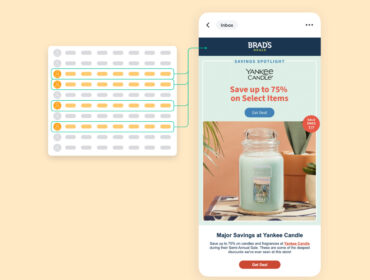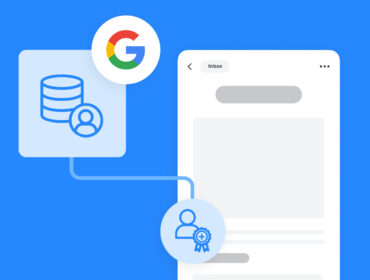Part 1: Interoperability is the key to publishers thriving in the third-party cookieless era of Universal ID 2.0
Unified ID 1.0 succeeded where others failed because it enabled additional demand for publishers, was good for the ecosystem, was open, and didn’t have the complex barriers that are inherent with encryption. And Unified ID 2.0 picks up where 1.0 left off.
The instinct may be for Publishers to put all of their eggs into the basket of Unified ID 2.0 as a set it and forget it solution for a post-third-party cookie world. This is not the intent of Unified ID 2.0. In fact, during the initial webinar where Index Exchange, The Trade Desk, and Magnite discussed the collective industry vision and planning around the Unified ID 2.0, they explained their true aim is to preserve a competitive marketplace around the open internet.
Unified ID 2.0 is a bridge to the new era and is vastly superior compared to the Privacy Sandbox. Unified ID 2.0 is open, has a clear use case, is interoperable with other IDs, engineered to benefit the players who earn first-party relationships with customers (rather than the walled gardens), works across browsers, and is flexible. When adopting it, Publishers and Brands must learn from the Walled Gardens by doubling down on the hidden asset that’s allowed Walled Gardens to grow their business without intermediaries: email.
UID 2.0 on publisher’s sites offers publishers a rare chance to both increase the value of their web inventory while giving a supercharge to the process of building an email program: capturing email addresses and building profitable email programs with advertising in newsletters and alerts. The email program makes money in the short-term for Publishers, but it’s an asset that will forge these Publishers’ third-party cookie-proofed future paths. It creates a CRM-centric logged-in environment a la the walled gardens, and it’s easily pursuable as an addendum to the adoption of the Unified ID 2.0.
How many more times will Publishers and Brands get fooled into not controlling their destinies? If Google fools me once by convincing me to trust their auction dynamics (last-look), shame on Google. If Google fools me twice by convincing me to trust their attribution model (last-click), shame on Google. If they fool me for a third time with their most recent attempt to use their browser dominance to force the privacy sandbox onto the ecosystem before there is a practical framework to replace the targeting, measurement, attribution, and optimization necessary to enable advertiser success and justify high CPMs: shame on me.
For Publishers and Brands, who have already been fooled by Facebook and Google into using the Walled Gardens’ single sign on (and, thus, forgoing their own efforts to collect emails directly from customers) the lesson should be clear: Publishers must attempt to simultaneously collect emails as they adopt UID 2.0. If they fail to, they are foregoing an opportunity to build a profitable email program and the foundation for addressability across their properties. That’s Charlie Brown kicking a football territory.
Compared to Apple, Facebook and Google are allies to the ecosystem. If Apple was truly committed to giving consumers choice, they would bring the same options they allow in their app store to the email channel: In apps, each App Publisher gets to ask each consumer about opting in to targeting advertising. However, Apple’s email solution doesn’t have that flexibility for publishers. Instead, consumers do a blanket “yes/no” for the entire inbox, relegating a brand who sends email to the same status as a well-respected publisher who brings them trusted news. Do consumers really want to apply the same permissions to each? Why aren’t they given this latitude? Could it be because Apple doesn’t actually care about helping the consumer but is instead focused on forcing the Publisher to move ever more assets inside its walled garden?
Apple is a hypocrite for encouraging Publishers to collect first-party data but then disintermediating those people who have opted in from the publisher by defaulting those customers to burner emails and enacting MPP, which obscures the relationship between publisher and subscriber.
Clearly, Apple’s goal is to subjugate the Publisher, driving the only viable way to monetize into Apple’s ecosystem, where Apple will have the Publishers at even more mercy than they are now. There can be no other conclusion: Apple is purposely trying to make email less effective in order to drive people to apps.
Publishers have a special relationship with their audience. Don’t allow disintermediation.
In email, in order for a publisher to sign up readers for an email program (and thus monetize that reader’s trust and attention), the publisher must get a confirmed subscription (opt-in) from the reader by getting their permission. In this new era of post-third-party cookies, nearly every idea to promote the health of the ecosystem, inclusive of Unified ID 2.0, revolves around that same idea extended to the web. Readers must sign up for use of their data with their email address as the cross-channel permission slip to enable targeted advertisements with Unified ID 2.0, similar to how readers subscribe to publisher’s email properties. This is well thought out since it brings a practice consumers already understand and endorse to the Unified ID 2.0 model.
As the Unified ID 2.0 is built out, it’s become clear that the key to getting readers to agree to targeted ads (as a condition of seeing premium content) will once again rest on the fulcrum of the email address (captured through registration) as a digital passport for the internet.
The best Publishers understand that owning the relationship with the reader directly and building out profitable email programs is infinitely more valuable than the ephemeral opportunity to serve ads to a visitor who may not yet be a regular reader. A temporary visitor is just scratching the surface of the potential value to a Publisher. Publishers must seize the opportunity of UID 2.0 to commit to pursuing registrations and capturing emails. If the Publisher is able to forge a 1:1 relationship with the one-time visitor in order to make them a lifetime customer, then they are unlocking the ability to do so much more.
That 1:1 relationship can be forged via a direct relationship with the reader in the form of an email program of newsletters and alerts, which is an incremental, logged-in environment for Publishers. Via that email program, the publisher can serve ads within those emails, representing a logged-in, measurable audience to brands who crave it, and the email can also act as a way to sell subscriptions. The email program, after all, is key to the practice of dynamic paywalls, a strategy key to a growing number of Publishers who are prioritizing subscription strategies and upselling and cross-selling other offerings. This is mirroring the successful strategies of walled gardens, who leverage the 1:1 relationship of email to keep their customers engaged and coming back while upselling offerings in their product lines. For Publishers, this would include leveraging the email relationship to drive app downloads, traffic to partners, or even pushing subscribers to any CTV offerings the Publisher benefits from.
Obviously, driving registrations are worth it for Publishers. Why else would the walled gardens of Facebook, Apple, Instagram, LinkedIn, Google/Youtube, etc. have giant teams devoted to it? Publishers should be mimicking this so that they can enjoy all the features and functionalities of the walled gardens without handing over their best inventory.


